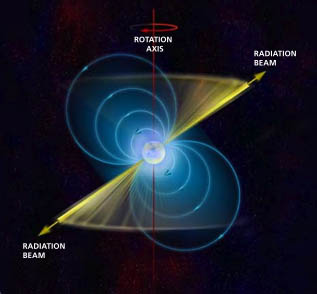
For an astronomer, finding the fastest-spinning pulsar on record is like, well, nothing in this world. “It’s not quite like striking gold and not quite like winning the lottery,” says Vicky Kaspi, the McGill physics professor who oversaw the McGill Pulsar Group discovery. “There was no ‘Eureka!’ moment in this one… It was more like a gradual process of dispelling our collective skepticism and then a ‘Yeah, okay. This is the real thing.'”
Kaspi’s PhD student, Jason Hessels, made the discovery using the National Science Foundation’s Robert C. Byrd Green Bank Telescope in Green Bank, West Virginia. The new pulsar, says Hessels, will give scientists important new information about the exceptionally dense neutron stars—one of the most mysterious forms of matter in the universe.
“We believe that the matter in neutron stars is denser than an atomic nucleus, but it is unclear by how much,” he says. “Our observations of such a rapidly rotating star set a hard upper limit on its size, which tells us how dense the star can be.” Hessels and his colleagues presented their findings to a recent meeting of the American Astronomical Society in Washington, DC.
The pulsar research was supported by the CFI, NSERC, the Fonds québécois de la recherche sur la nature et les technologies, the Canadian Institute for Advanced Research, the Canada Research Chairs program and the National Science Foundation.
For more information on Vicky Kaspi and her work on pulsars, see Headway: www.mcgill.ca/headway/fall2005/indepth/
